Downbeats are the backbone of any musical rhythm.
They set the tone, establish the groove, and provide the structure that keeps a song moving forward (in turn, keeping people interested).
Plus, understanding downbeats can help you create more compelling rhythms and keep your tracks sounding on point and professional.
As a producer or musician, knowing all about downbeats is super important because it’s the key to mastering the rhythmic foundation of your music.
That’s why we’re breaking down everything to help you understand what is a downbeat, like:
- Where the downbeat occurs (beats 2 and 4) ✓
- The role of the downbeat in different time signatures ✓
- How the downbeat holds down the rhythm ✓
- The difference between downbeats, off beats, upbeats, and on beat ✓
- Using kick drums and basslines to reinforce the downbeat ✓
- Syncopation and its effect on the downbeat ✓
- Layering percussion for a stronger downbeat ✓
- Creative use of silence around the downbeat ✓
- Processing techniques to enhance the downbeat ✓
- How downbeats impact the groove in different genres ✓
- Much more about what is a downbeat ✓
After reading this article, you’ll know exactly what is a downbeat.
It’ll help you lay down rhythms that are not only tight and engaging but also move the music forward with razor sharp precision.
Plus, you’ll be able to manipulate the downbeat like a professional 一 adding depth and dynamics to your tracks that keep listeners hooked when they hear it.
So, let’s dive in…
Table of Contents
- What is a Downbeat? Breaking it Down
- Downbeat vs Upbeat
- Downbeat in Different Time Signatures
- Why Downbeats Matter in Music Production
- Establishing Groove and Rhythm
- Synchronizing Instruments and Sounds
- Using Kick Drums and Basslines to Reinforce the Downbeat
- Downbeat Variations and Syncopation in Production
- Layering Percussion to Highlight the Downbeat
- Creative Use of Silence on the Downbeat
- Effects and Processing Techniques for Downbeat Impact
- What is a Downbeat: Final Thoughts
What is a Downbeat? Breaking it Down
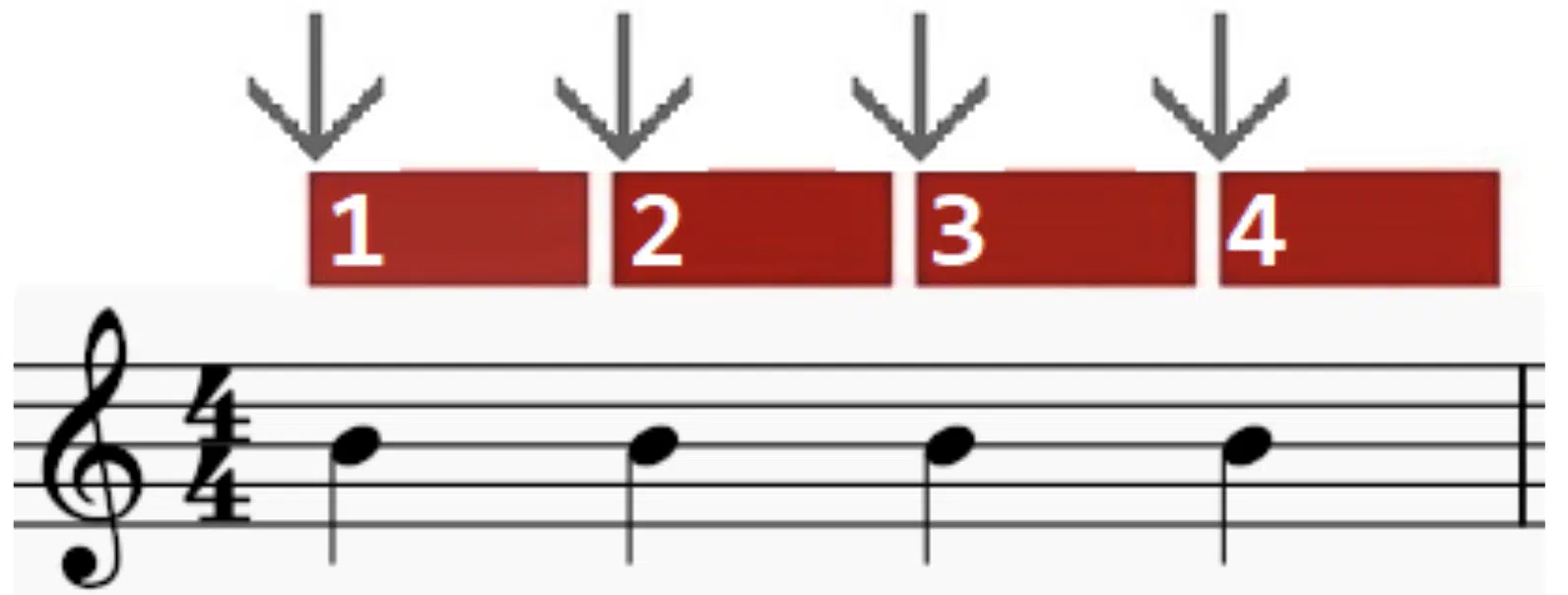
The downbeat is the first beat of every measure.
It serves as the strongest beat and provides the foundation for the entire rhythmic structure of your song.
In any given time signature, whether in common time (4/4), 3/4, or even more complex meters like 5/4, the downbeat plays the beginning of the musical measure.
This beat is key because it sets the rhythmic structure that all other beats follow.
For instance, in common time, the downbeat falls on the first beat (not the last beat), often emphasized by the kick drum.
It gives off a sense of stability and grounds the rhythm 一 this rhythmic emphasis on the downbeat creates a reference point for both musicians and listeners.
Basically it makes sure the rhythm stays consistent and predictable (and will match the vibe you’re going for).
When the downbeat occurs, it typically aligns with the kick drum and snare drum, driving the musical rhythm forward.
As well as establishing a strong accent that listeners can easily follow and get lost in.
Without a clear downbeat, the rhythmic structure of a song can become super messy, losing the sense of groove and forward motion that is essential in popular music.
Downbeat vs Upbeat

Understanding the difference between a downbeat and an upbeat is super important when it comes to mastering rhythmic structure, so pay attention.
- The downbeat is the strongest beat, typically occurring on the first beat of the measure.
- The upbeat refers to the weaker beats that fall between the downbeats.
In a 4/4 time signature, for example, the upbeat typically falls on the “and” counts, such as the “and” after the first beat (1 and 2 and 3 and 4).
While the downbeat provides a solid foundation, the upbeat adds a sense of lift and forward motion to the rhythm.
A classic example of this can be found all throughout funk music, where the interplay between the downbeat and upbeat creates a groove that listeners can’t resist.
As a producer, you can use this contrast to your advantage…
Simply place a strong kick drum on the downbeat and a snare drum on the upbeat to create a driving rhythm that keeps the music moving forward.
This balance between downbeat and upbeat is what gives a song its sense of groove 一 making it essential for anybody looking to create show-stopping rhythmic patterns.
-
Pro Tip: What Is an Off Beat Then?

An off beat is a rhythmic emphasis placed on the weaker beats (which you now know are upbeats) of a musical measure, which creates a syncopated feel in your music.
For example, in a 4/4 time signature, the off beat typically falls between the strong beats, like on the “and” of a quarter note.
While the downbeat plays a central role in providing structure, the off beat can add a layer of complexity and groove, especially in tonal music.
If you’re wondering how many beats to emphasize, try placing rhythmic emphasis on the last beat or the off beats between the strong beats.
This will help you create a more dynamic rhythm, which people really respond to.
NOTE: When you hear the musical term “on beat,” it simply means aligning with the strong beats, typically the downbeat, where the primary rhythmic emphasis is placed in a measure. Easy and straightforward, right?
Downbeat in Different Time Signatures
When you’re learning what is a downbeat, you have to realize that its role subtly changes depending on the time signature. However, its importance remains consistent across all musical styles. Whether you’re working in common time, triple meter, or odd meters, the downbeat guides the rhythm and keeps the music grounded. Let’s break it down.
-
Downbeat in Common Time (4/4)
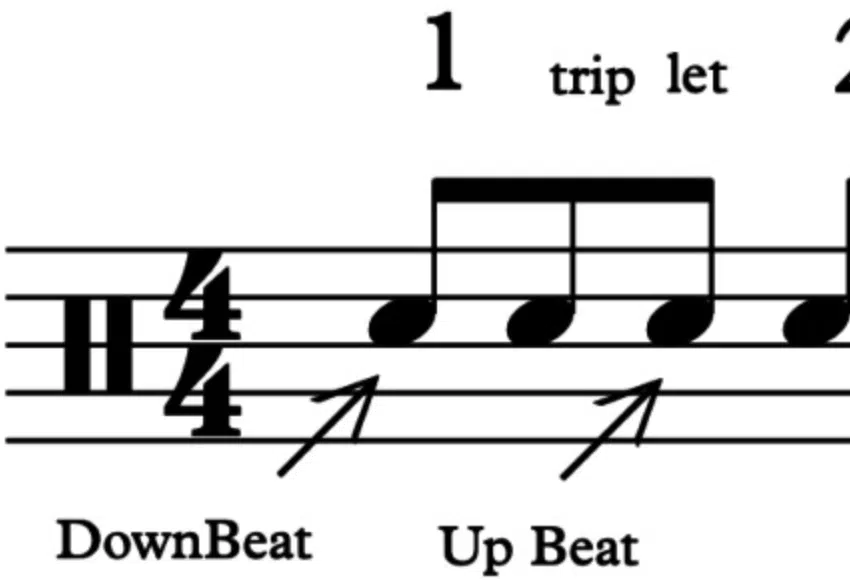
In common time (4/4 time), the downbeat is the first beat of the measure, and it’s usually the strongest beat in the entire bar.
This downbeat is what gives 4/4 its steady, predictable feel 一 making it one of the most popular time signatures in more modern songs.
I know I usually say switching things up is the way to go, but with this particular technique, it’s actually all about being predictable, so keep that in mind.
You’ll typically place a kick drum on the downbeat to anchor the rhythm and provide a sense of stability that listeners can easily hang onto.
For example, in many rock tracks, the downbeat is reinforced by a powerful kick drum, while the snare drum hits on beats 2 and 4.
It creates a strong backbeat that drives the rhythm forward, which is what it’s all about when it comes to learning what is a downbeat.
This setup isn’t just limited to rock…
You’ll also hear it in countless pop songs, where the downbeat serves as the foundation for catchy hooks and memorable grooves.
Just remember with this specific time signature, it’s all about (when we’re talking four beats) that it’s all about beats 2 and 4.
Pro Tip
Classic examples can be found all throughout funk music (think: James Brown), where the downbeat lays the groundwork for the syncopated rhythms that give the genre its signature groove. By emphasizing the downbeat in this way, you can create a rhythmic structure that feels both solid and dynamic when you play it, making the music engaging and hypnotic.
-
Understanding Downbeats in 3/4 and 6/8 Time
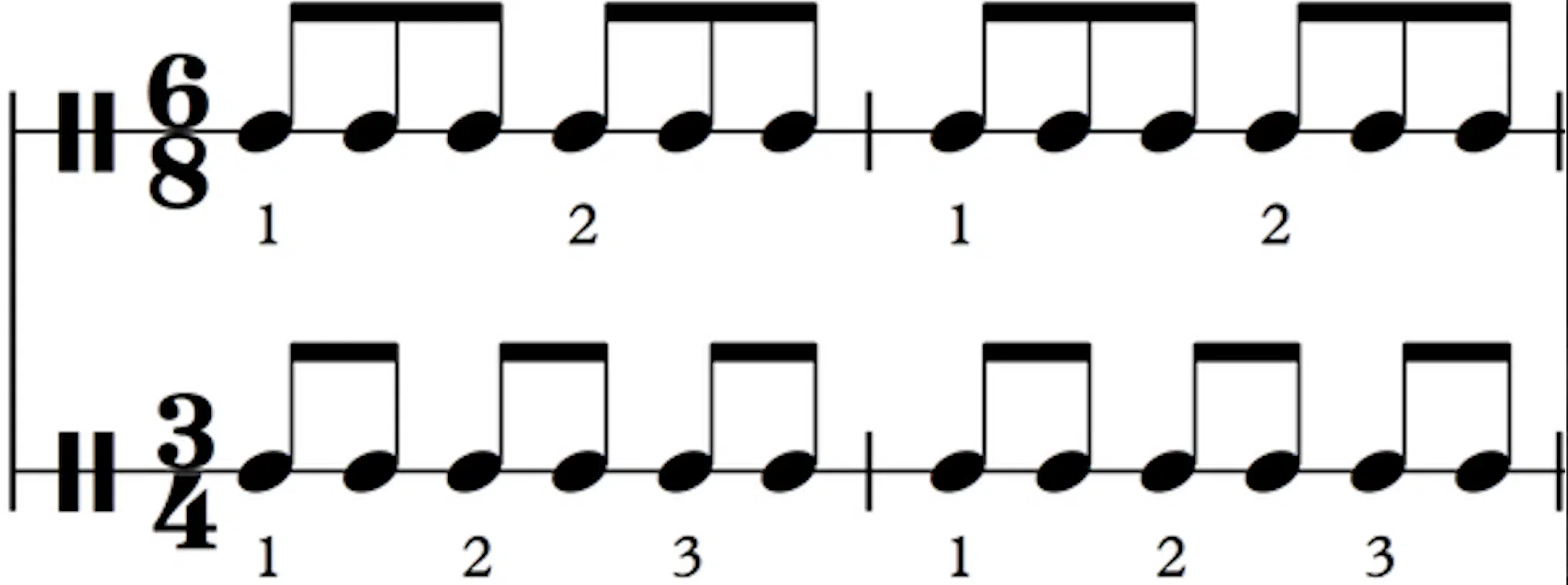
When it comes to 3/4 and 6/8 time signatures, the downbeat continues to play a huge role, but its impact shifts slightly compared to 4/4 time…
In 3/4 time, the downbeat still occurs on the first beat of every musical measure, creating a rhythm that’s often used to build a flowing, more circular groove.
It’s not such a straightforward, driving rhythm like 4/4 time.
This is ideal for genres like indie or folk music, where the kick drum on the downbeat gives the rhythm a grounded feel, while the other beats add movement and texture.
In 6/8 time, which you’ll find in many R&B songs, the downbeat also falls on the first beat, but the measure is divided into two groups of three eighth notes.
This gives the rhythm a rolling, triplet-based feel that’s smooth and dynamic 一 perfect for creating a soulful, laid-back vibe.
For example, in some classic R&B tracks, the downbeat holds down the rhythm while the melody glides effortlessly over it.
This will create an irresistible blend of rhythm and melody, which is just what you’re looking for.
-
The Downbeat in Odd Meters (5/4, 7/8)
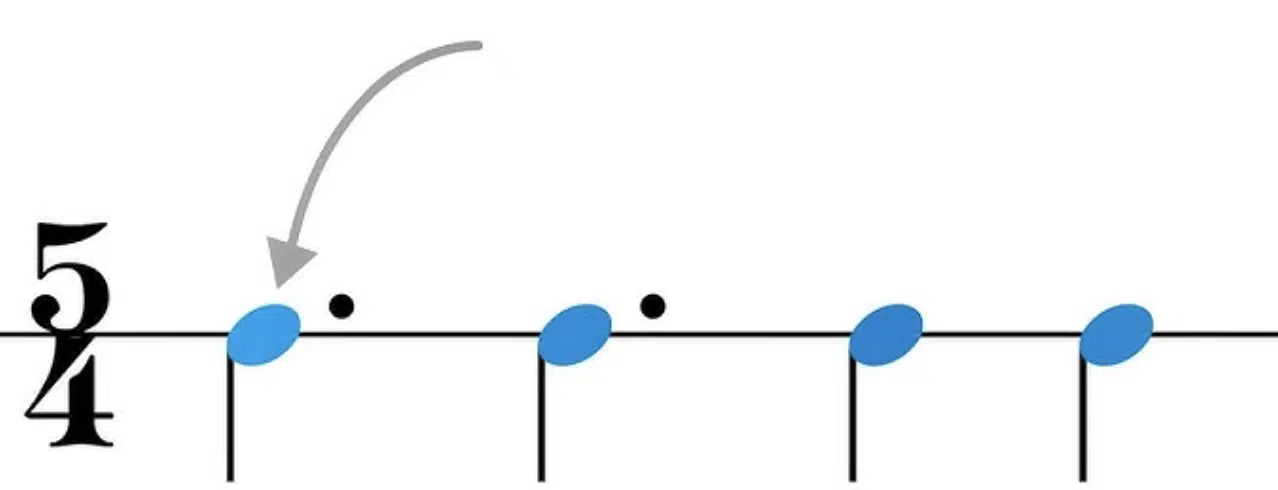
In odd meters like 5/4 or 7/8, the downbeat becomes even more important in helping you (as musicians) and listeners keep track of the rhythm.
In 5/4 time, the downbeat typically lands on the first beat of the measure, giving a solid foundation despite the extra beat that makes this time signature feel different.
A more modern example of this can be found in Radiohead’s “Morning Bell.”
If you listen, you’ll hear how the downbeat helps keep the rhythm grounded even though the time signature is more unconventional.
In 7/8 time, the downbeat also falls on the first beat, with the musical measure usually split into groups like 3 + 2 + 2 or 2 + 2 + 3 (depending on the song).
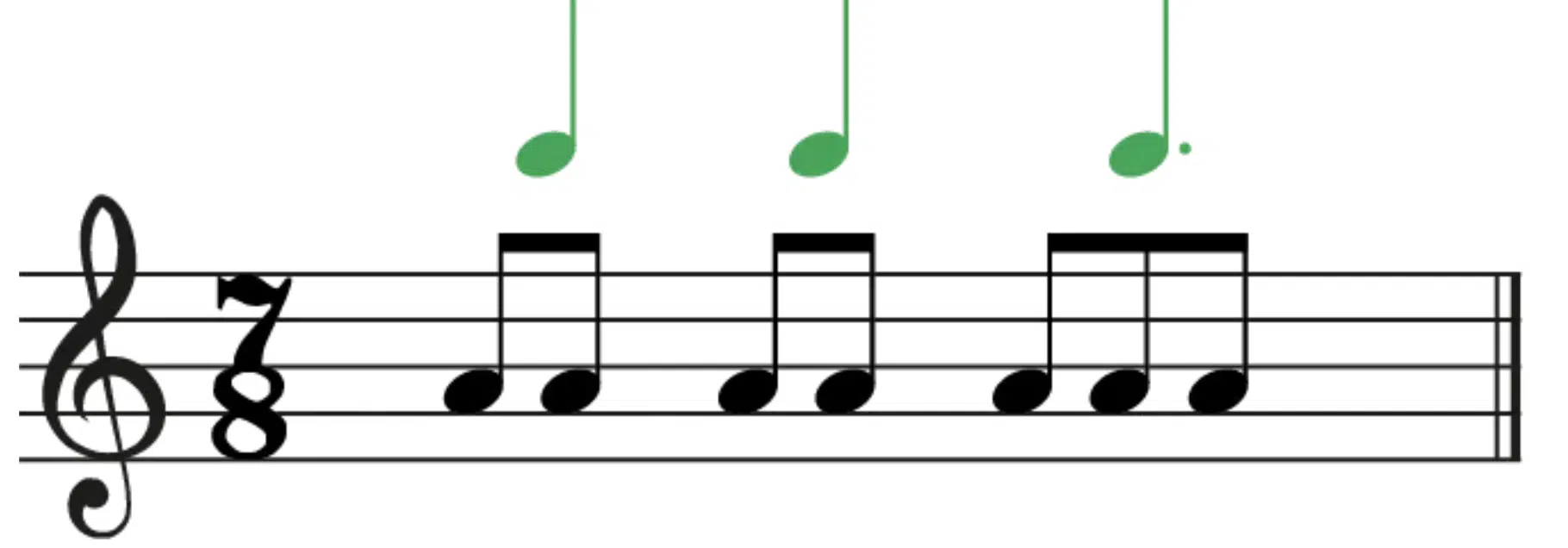
(2+2+3)
This creates a rhythm that feels both unique and interesting, often used in genres like progressive rock or electronic music to add something unexpected.
Side note, if you want to learn all about electronic song structure, we’ve got you covered.
In these popular styles, the downbeat is what keeps the rhythm from feeling too chaotic, making sure the music stays connected to a strong beat.
Why Downbeats Matter in Music Production
In the music production world, the downbeat is more than just a starting point. It’s the pulse that drives the entire track. Understanding how exactly to emphasize and manipulate the downbeat is key to creating rhythms that not only move listeners but also keep the music tightly structured and engaging. So, let’s get into it…
-
Establishing Groove and Rhythm

The downbeat is super important in setting up the groove and rhythm of a song, acting as the pulse that holds everything together.
For example, in hip-hop tracks like Kendrick Lamar’s “HUMBLE.,” the kick drum lands heavily on the downbeat (very heavily).
It drives the rhythm forward and gives the beat its undeniable punch.
This strong downbeat creates a foundation that the rest of the drums, bass, and even the vocal rhythms can play off.
Switching gears, in genres like funk music, the downbeat works with syncopated off beats to create a groove that’s both tight and infectious.
NOTE: You can hear a perfect example in James Brown’s “Get Up Offa That Thing” beat. Here, the downbeat keeps the rhythm anchored, while the syncopated rhythms give the groove its signature bounce.
By focusing on the downbeat, you can create rhythms that not only push the music forward but also make the groove super intriguing for your listeners.
It helps ensure the track keeps everyone moving and they don’t get bored.
-
Synchronizing Instruments and Sounds
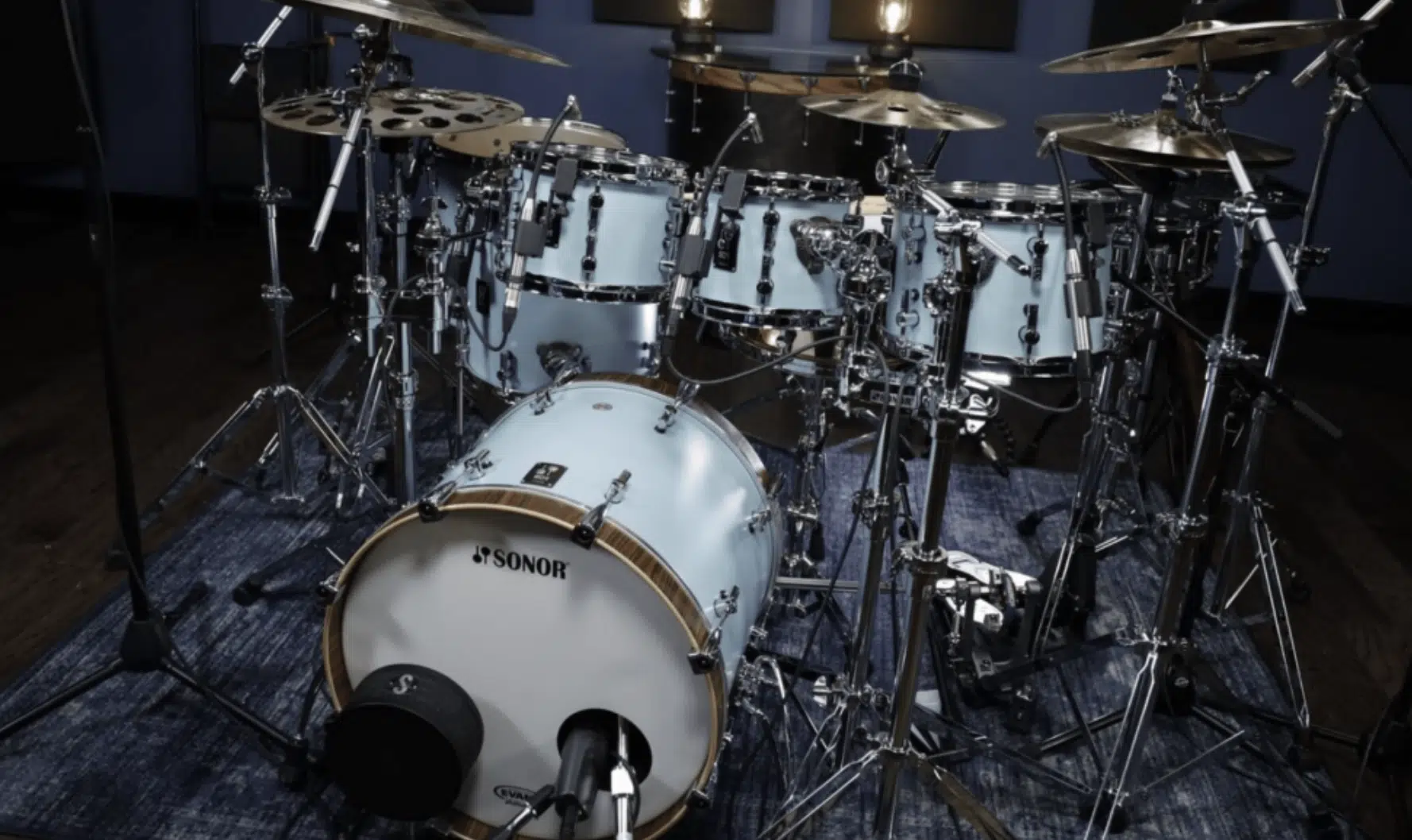
The downbeat is a great reference point for synchronizing different instruments and sounds within a track 一 ensuring everything stays locked in rhythmically.
For example, in electronic dance music (EDM), the kick drum typically hits on the downbeat, with the bassline and synths following suit.
This will create a unified and driving rhythm.
In tracks like Calvin Harris’s “Summer,” the downbeat is reinforced by both the kick drum and the bass, making the drop hit even harder and giving the track its high-energy feel.
And, as you know, it’s all about that drop and keeping the energy up.
This synchronization is also important in live band settings, where the drummer might emphasize the downbeat with a kick or snare drum to keep the entire band in sync.
By aligning key elements with the downbeat, you can make sure that the music feels tight and cohesive, making it easier for listeners to connect with the rhythm and groove.
-
Using Kick Drums and Basslines to Reinforce the Downbeat
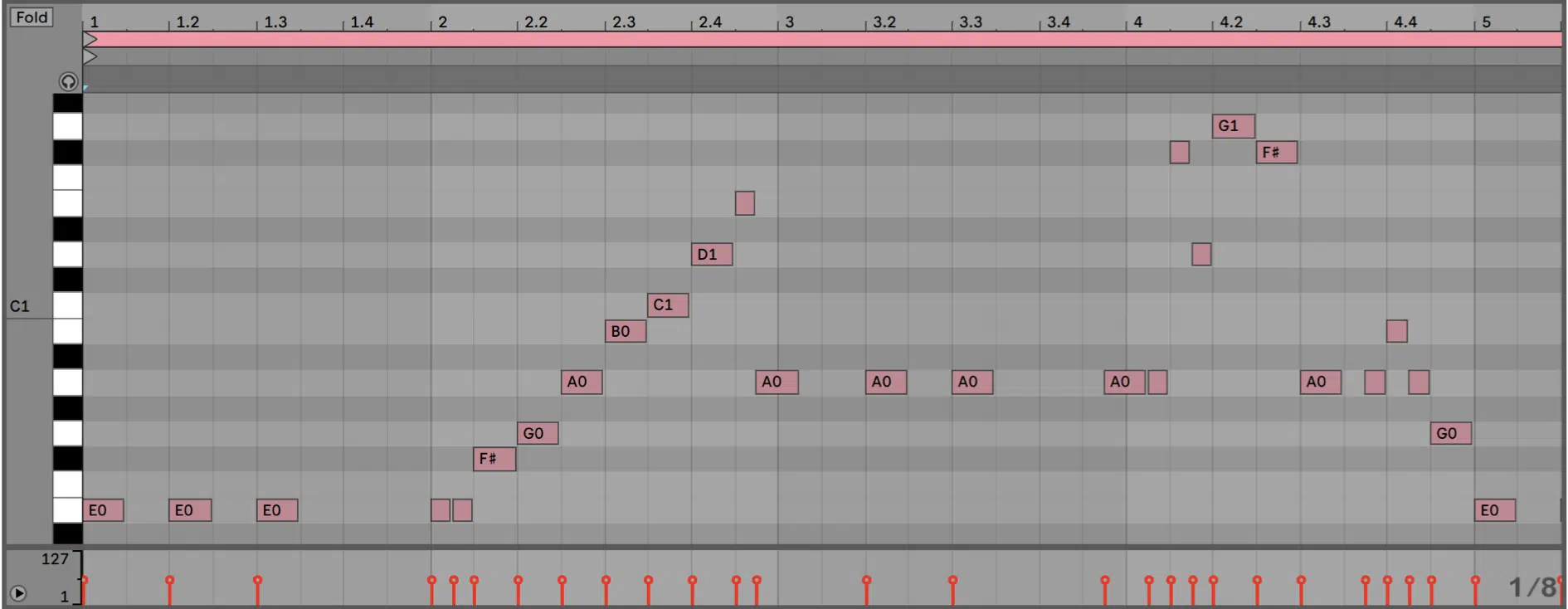
The downbeat is often the strongest beat in a measure as we’ve said many time.
So, using kick drums and basslines to reinforce it can make a track feel even more powerful and grounded.
In many popular music genres, like house and hip-hop, producers place a heavy kick drum on the downbeat to give the rhythm a solid foundation.
For example, in Drake’s “In My Feelings,” the kick drum hits hard on the downbeat, creating a pulse that drives the song forward and keeps listeners hooked.
Pairing the kick drum with a bassline that also hits on the downbeat, like in Daft Punk’s “Get Lucky,” can enhance this effect 一 making the groove feel even more fluid.
NOTE: Dance music uses this technique all day, because a strong downbeat keeps the energy high and the rhythm tight, which is what it’s all about.
By focusing on the downbeat with both the kick drum and bassline, you can create a rhythmic structure that feels both solid and dynamic.
Because remember, you need to keep people moving and invested.
-
Downbeat Variations and Syncopation in Production

While the downbeat is the strongest beat, playing with variations and syncopation can add an extra layer of complexity and interest to your track.
Syncopation involves placing emphasis on off beats or weaker beats, creating a rhythm that feels unexpected and engaging.
For example, in Stevie Wonder’s “Superstition,” the syncopated rhythm of the clavinet contrasts with the steady downbeat 一 creating a groove that’s both tight and funky.
By shifting the focus away from the downbeat at times, you can create a sense of tension and release, so the downbeat’s return is even more impactful.
NOTE: Try emphasizing the off beats or delay the rhythmic emphasis until just after the downbeat so your listeners anticipate the downbeat’s return.
This technique is widely used in genres like funk music and jazz, where the interplay between the downbeat and syncopated rhythms gives the music its signature feel.
Play around with different downbeat variations to keep the rhythm fresh and engaging, ensuring that the groove stays interesting throughout the track.
-
Layering Percussion to Highlight the Downbeat

Layering percussion is a powerful technique to make the downbeat stand out and give the rhythm even more depth.
By adding certain elements on the downbeat, you can create a stronger sense of rhythmic structure and forward motion, like:
- Claps
- Hi-hats
- Additional drum hits
For example, in electronic music, layering a snare drum or a clap on top of the kick drum on the downbeat can emphasize the beat.
It will make it more pronounced and give your track a punchier feel.
This layering not only reinforces the downbeat but also adds texture to the rhythm 一 making the groove feel richer and more complex.
In live band settings, drummers might layer toms or cymbals on the downbeat to add intensity during a chorus or bridge so the rhythm maintains its energy.
By carefully choosing and layering percussion elements on the downbeat, you can create a show-stopping rhythm that keeps things rolling the right way.
-
Creative Use of Silence on the Downbeat

Silence can be just as powerful as sound when it comes to emphasizing the downbeat in a track (or when it comes to production in general).
By strategically placing a moment of silence on or just before the downbeat, you can create a dramatic effect that grabs the listener’s attention.
This technique is used all day in genres like trap and dubstep, where a sudden drop in the music can make the downbeat hit even harder when the beat returns.
It’s one of my favorite techniques actually, and Skrillex is a big advocate as well.
Simply cut all musical sound right before the downbeat in a drop can create a sense of anticipation, which makes the return of the kick drum and bassline super impactful.
This use of silence can also add a sense of space and tension 一 allowing the downbeat to stand out more when it finally hits.
By incorporating silence around the downbeat, you can manipulate the listener’s perception of the rhythm, which equals a more powerful result.
-
Effects and Processing Techniques for Downbeat Impact
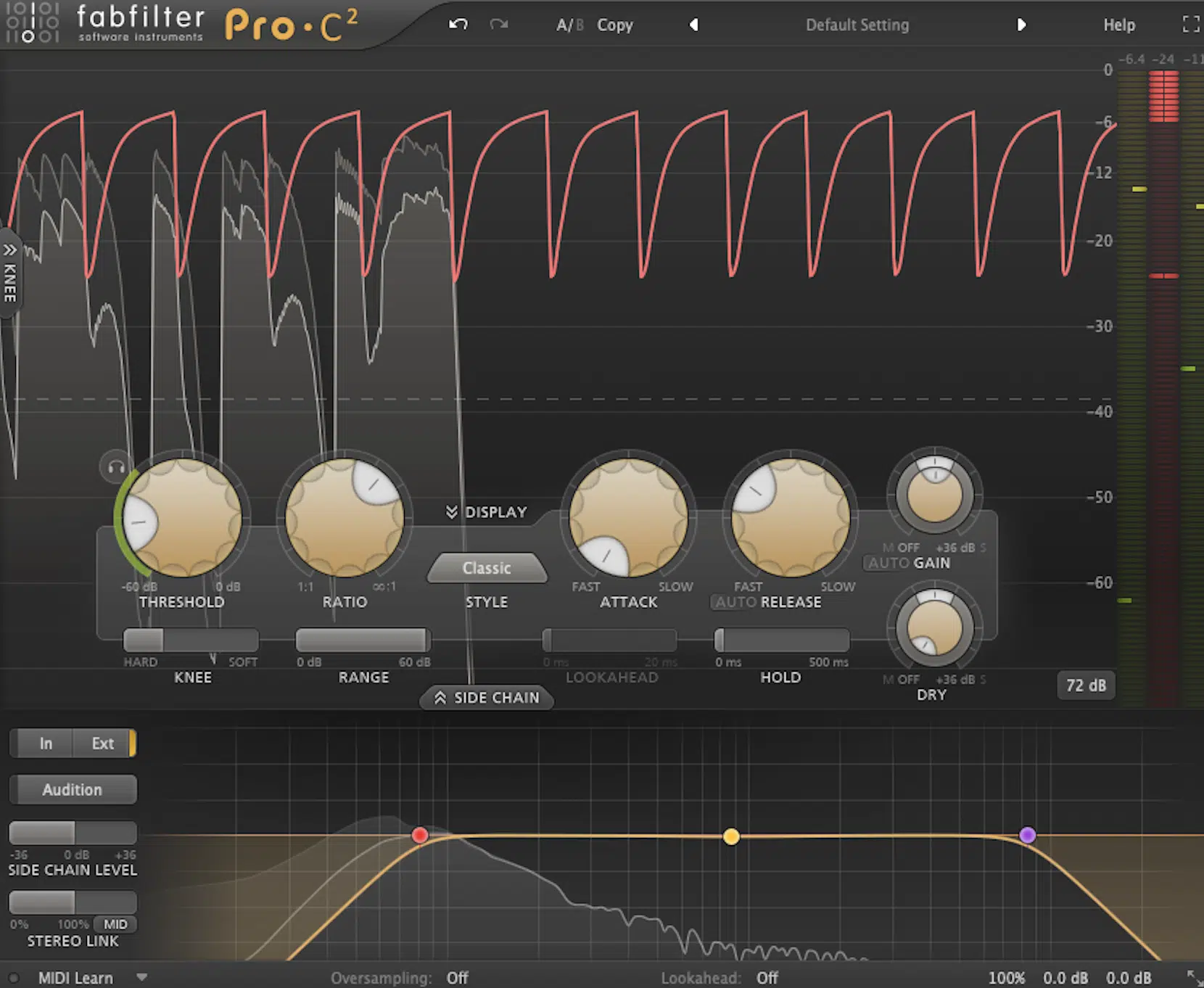
Using creative effects and processing techniques can also enhance the impact of the downbeat in a track.
For example, applying compression to the kick drum that hits on the downbeat can make it punchier and more present in the mix (it’ll stand out more).
Reverb and delay can also be used creatively to add space and depth to the downbeat so it feels more expansive and immersive.
NOTE: Try adding a short reverb to the snare drum on the downbeat to create a sense of size 一 making the rhythm feel bigger and, in turn, more impactful.
Sidechain compression, where the downbeat triggers a compressor on other elements, can also be used to give the downbeat more prominence by reducing the volume of competing sounds.
Remember, it’s all about driving the track forward with the desired intensity and presence.
What is a Downbeat: Final Thoughts
By learning what is a downbeat, you can unlock the full potential of your rhythm and create grooves that really captivate your listeners.
With the help of everything you learned today, you’ll be able to emphasize the downbeat effectively, experiment with syncopation, and layer percussion for depth and complexity.
Plus, make sure your beats are tight, impactful, and always on point like a professional.
Remember, it’s all about mastering the downbeat and ensuring that your rhythm drives the track forward with precision and energy.
That’s going to be your key to success and rhythmic greatness.
As a special bonus, you’ve got to check out all of these epic free packs, jam-packed with high-quality samples that can help you find the perfect downbeat.
Whether you’re producing hip-hop, electronic, or any other genre, using these free sounds will give you even more tools to create powerful, dynamic rhythms.
Ones that absolutely blow the competition out of the water and help establish yourself as a professional producer.
So go ahead and dive into your next project with confidence.
Keep the downbeat at the heart of your rhythm, and let it guide you to create music that your audience just can’t resist.
Until next time…







Leave a Reply
You must belogged in to post a comment.